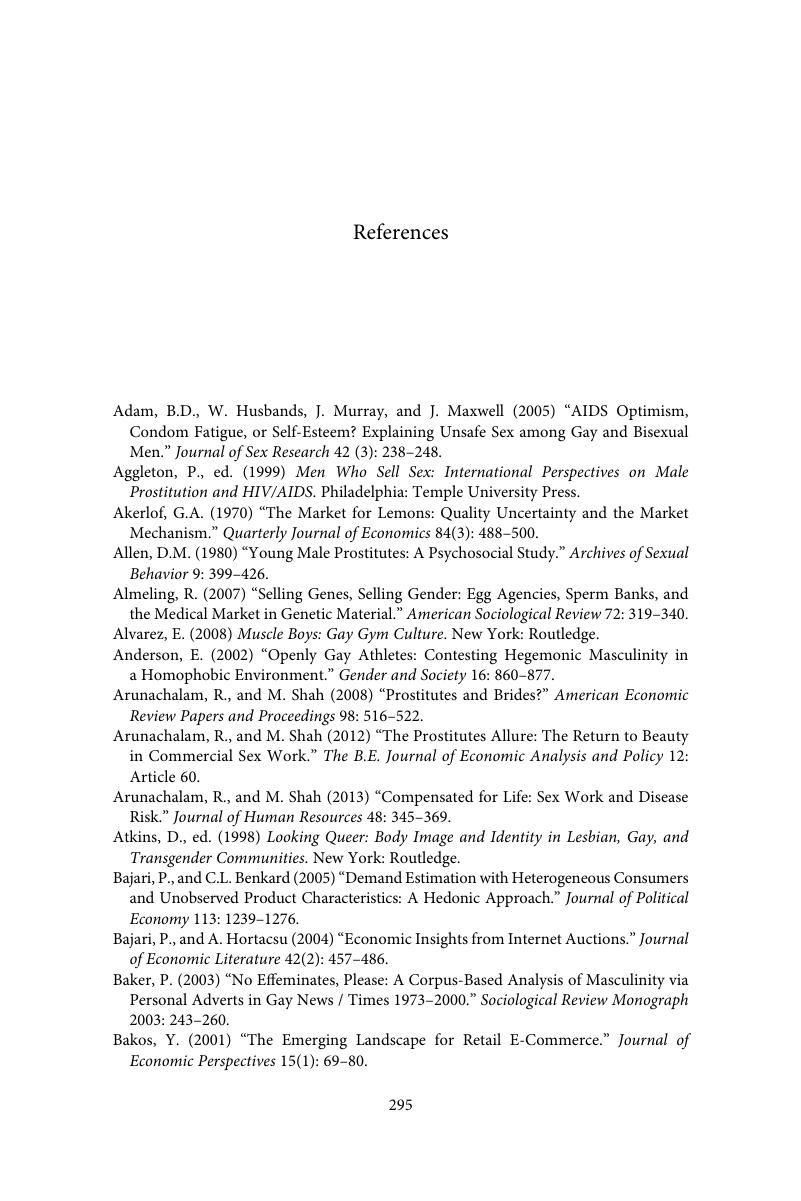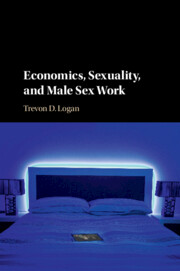Book contents
- Economics, Sexuality, and Male Sex Work
- Economics, Sexuality, and Male Sex Work
- Copyright page
- Dedication
- Contents
- Figures
- Tables
- Note to Readers
- Acknowledgments
- Introduction
- Part I The History and Economics of Male Sex Work
- Part II Male Sex Work and Sexuality
- Book part
- Notes
- References
- Index
- References
References
Published online by Cambridge University Press: 21 January 2017
- Economics, Sexuality, and Male Sex Work
- Economics, Sexuality, and Male Sex Work
- Copyright page
- Dedication
- Contents
- Figures
- Tables
- Note to Readers
- Acknowledgments
- Introduction
- Part I The History and Economics of Male Sex Work
- Part II Male Sex Work and Sexuality
- Book part
- Notes
- References
- Index
- References
Summary

- Type
- Chapter
- Information
- Economics, Sexuality, and Male Sex Work , pp. 295 - 310Publisher: Cambridge University PressPrint publication year: 2017

